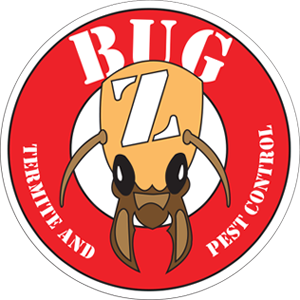Pavement Ants
Pavement Ants are named for their habit of nesting in or under cracks in pavement.
What do Pavement Ants look like?
Pavement ants are small, typically measuring between 2.5 to 4 mm in length. They are usually dark brown to black in color. These ants have parallel lines on their head and thorax, which can be seen with magnification. Their bodies are segmented, with a distinctive node-like structure that consists of two segments, separating the thorax from the abdomen. The workers have a stinger, though it's rarely used against humans. Their antennae are bent or "elbowed," which is a common feature among many ant species. Pavement ants are often seen outdoors forming trails along sidewalks, the edges of buildings, or near their nests in the ground, which are usually located under stones, along curbs, or in cracks of pavement, hence their name.
Nuisance or danger?
Pavement ants can be considered a nuisance, especially when they invade homes and other buildings in search of food. While they are not known to cause serious structural damage like carpenter ants or termites, their presence can be bothersome. They are attracted to a wide variety of foods, including meats, nuts, cheeses, honey, bread, and other sweets, which can lead them to forage in kitchens and pantries.
In some cases, pavement ants can engage in battles with rival ant colonies, which can lead to noticeable swarms of ants on sidewalks or near their nest entrances. These battles, while interesting to observe, do not pose a danger to humans.
How do I know if I have Pavement Ants?
Identifying pavement ants and determining if you have an infestation involves observing several key characteristics and behaviors. Here's how to know if you're dealing with pavement ants:
1. Location and Habitat: As their name suggests, pavement ants often make their nests in or under cracks in pavements, sidewalks, driveways, and building foundations. If you notice small piles of dirt or sand in these areas, it might be an indication of their nests.
2. Foraging Patterns: Pavement ants are known for establishing trails between their nest and food sources. If you see a consistent line of ants marching to and from a food source, especially along edges or where the wall meets the floor, they could be pavement ants.
3. Indoor Presence: If you find ants indoors, especially in the kitchen or areas where food is stored, and they match the physical description above, they are likely pavement ants. They are attracted to sweet, greasy, and protein-rich foods.
4. Ant Battles: Pavement ant colonies will sometimes engage in battles with other ant colonies over territory. These can occur outdoors and involve large numbers of ants locked in combat.
If you suspect you have pavement ants but are unsure, capturing a few (safely) and examining them with a magnifying glass can help confirm their identity based on their physical characteristics. Additionally, considering their typical nesting sites and behavior can also aid in identification. If an infestation is confirmed call us at BugZ Termite and Pest Control and we can provide more specific identification and effective treatment options.
Why do I have them?
Pavement ants are drawn to areas that offer them food, moisture, and shelter, which are abundant in and around human structures. If you're finding pavement ants in or around your property, it could be due to several factors:
1. Food Sources
Pavement ants are omnivorous and will eat almost anything, including sweets, meats, bread, grease, and other insects. Leftover crumbs, spills, or pet food left out can attract these ants to your home.
2. Moisture
Like many pests, pavement ants seek out moisture. Areas with standing water, leaking pipes, or poor drainage can attract these ants.
3. Shelter and Nesting Sites
Pavement ants get their name from their tendency to nest under pavements, sidewalks, driveways, and building foundations. Cracks in concrete or gaps in bricks provide ideal entry points for these ants into your home.
They also nest in the soil, beneath stones, logs, mulch, and other debris, making well-landscaped yards a potential habitat.
4. Warmth and Protection
Inside, they might be drawn to the warmth and protection of wall voids, insulation, under floors, or near heating sources, especially during cooler months.
5. Easy Access
Openings around doors, windows, utility lines, and foundation cracks make it easy for pavement ants to enter homes in search of food and shelter.
Addressing these factors can help deter pavement ants from settling in and around your property.
What should I do if I have Pavement Ants?
If you're dealing with pavement ant infestation, there are several steps you can take to eliminate them and prevent future invasions. Here's a comprehensive approach:
1. Eliminate Food Sources
- Keep your kitchen and dining areas clean. Wipe down surfaces to remove crumbs and spills immediately.
- Store food, especially sweets and pet food, in airtight containers.
- Regularly take out the trash and use bins with tight-fitting lids.
2. Reduce Moisture and Water Sources
- Fix leaky pipes and faucets.
- Ensure good drainage around your home to prevent standing water, which can attract ants.
3. Seal Entry Points
- Inspect your home for cracks and crevices in the foundation, around windows and doors, and where utility pipes and wires enter the house.
- Seal these openings with caulk or another appropriate material to prevent ants from entering.
4. Maintain the yard:
- Keep the area around your home clean and free of debris, trim back vegetation from the house, and avoid using excessive mulch where ants could nest.
5. Destroy the Nest
- If you can locate the pavement ant nest outdoors, boiling water can be an immediate, but temporary, solution to kill the ants inside. However, be cautious as boiling water can kill plants and beneficial insects and may not reach the queen ant to eliminate the colony.
6. Call BugZ Termite and Pest Control
- For persistent or large infestations, it may be necessary to call BugZ Termite and Pest Control. We can offer a more comprehensive solution, including identifying all nests and using professional-grade insecticides.
7. Ongoing Prevention
- Keep your home clean, particularly free of food debris.
- Seal up food and dispose of garbage regularly.
- Address moisture issues and seal entry points periodically to prevent new ants from entering.
What treatment is effective and how do I prepare for it?
NEVER use an over-the-counter insecticide for ant infestations. These readily available chemicals kill on contact, giving you the false sense that you’ve killed them all! In fact, you’ve now caused the queen to go into “overdrive”, reproducing her missing colony members at a much more rapid pace. Ant treatment involves treating the nest and baiting near scent trails, essentially transferring chemicals back to the queen. Once she’s dead, the colony dies soon after. Contact BugZ Termite and Pest Control at the first sign of any ant in the house or elsewhere on the property!
Preparing for Treatment
1. Sanitation
- Clean Up: Ensure your home, especially the kitchen and dining areas, is clean and free of food debris. Ants are less likely to enter if there is no available food.
- Remove Attractants: Store food in sealed containers and manage garbage and recycling effectively.
2. Identification and Inspection
- Find the Trails: Identify ant trails and potential entry points to your home.
- Locate Nests: If possible, try to locate where the ants are nesting, both indoors and outdoors.
3. Exclusion
- Seal Entry Points: Use caulk to seal cracks and crevices in the exterior of your home, including around windows and doors, to prevent ants from entering.
"If you can’t kill them…call us!"
© 2024 All Rights Reserved | Bug-Z Termite & Pest Control


